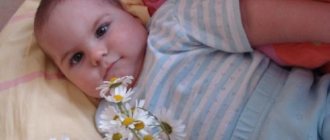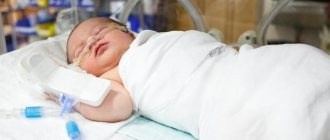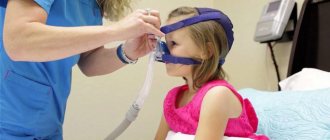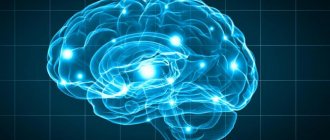Parents who suspect that their child has cerebral palsy would like the diagnostic process to be quick, but this is not the case. Diagnosing cerebral palsy is a complex, multi-step process of examinations, assessments and tests. Understanding the diagnostic process will help parents navigate this difficult time.
The process of diagnosing cerebral palsy includes monitoring the child's development. If the child was born prematurely or with low body weight, he is placed in the neonatal intensive care unit, where he is monitored by doctors. The child is also examined monthly in the clinic by a pediatrician, who can determine the first signs of cerebral palsy. In some cases, parents notice the first signs of the disease and come for a consultation with a specialist.
Parents become upset when they realize that the diagnostic process is very long and painstaking. However, these studies are necessary in order to understand everything about the child's condition.
12 steps to diagnose cerebral palsy:
- Step 1: Parent Observations
- Step 2: Clinical observations
- Step 3: Motor Function Analysis
- Step 4: Medical History
- Step 5: Documentation of concomitant diseases, selection of conditions and technical means that reduce the development of complications
- Step 6: Receive Test Results
- Step 7: Diagnosis
- Step 8: Confirm the diagnosis
- Step 9: Determine the Cause
- Step 10: Selecting a child management team
- Step 11: Making a plan for managing the child
- Step 12: Formation of a life plan for a child with cerebral palsy
These steps are detailed below.
Reasons for the development of cerebral palsy
Symptoms of cerebral palsy depend on the area of the brain affected.
The reasons that caused the development of cerebral palsy in the prenatal period include:
- intrauterine (TORCH) infections (toxoplasmosis, cytomegalovirus, herpes infection, hepatitis, rubella, chlamydia);
- severe forms of hemolytic disease (Rhesus - conflict or liver failure in the fetus due to the breakdown of hemoglobin);
- toxic effects on the fetus (bilirubin encephalopathy, abuse of alcohol, nicotine, drugs, persistent nephropathy);
- infectious diseases in the first and second trimester (rubella, influenza, chicken pox, infectious mononucleosis, common herpes or toxoplasmosis);
- progression of various specific infections (syphilis, tuberculosis);
- complex somatic diseases in a pregnant woman (diabetes mellitus, heart defects, renal failure, hypertension with high blood pressure, arrhythmias);
- taking medications, especially tranquilizers and antidepressants;
- severe and prolonged fetoplacental insufficiency with persistent oxygen starvation of the fetus;
- threat of miscarriage;
- severe toxicosis;
- post-term or multiple pregnancy;
- threat of miscarriage;
- injuries during pregnancy.
In 10% of cases, the development of cerebral palsy is associated with:
- with birth injuries against the background of severe asphyxia against the background of tight entanglement of the umbilical cord or placental abruption with single or multiple hemorrhages in the substance of the brain, cerebellum, ventricles or in the intrathecal space;
- pathological childbirth (if the position of the fetus is disturbed, rapid labor);
- childbirth, before 33 weeks of gestation - the brain is still immature and changes are possible during and after childbirth;
- active infectious diseases after childbirth with persistent intoxication that provoked neuronal damage;
- exposure to medications or toxic factors after childbirth;
- complex head injuries after birth.
Therefore, the widespread belief that the main causes of cerebral palsy are injuries to the head and cervical spine during childbirth is a mistake.
It is important to know that in most cases the baby is already born with the prerequisites for the formation of cerebral palsy and the earlier the first symptoms of the disease are noticed, the easier the form of the disease will develop in the child.
Many problems can be avoided if treated as early as possible.
Therefore, it is important to know what the first signs appear in newborns and infants with cerebral palsy.
Advantages of osteopathy in the treatment of cerebral palsy
Like any severe neurological pathology, cerebral palsy is treated comprehensively using drug therapy, physiotherapy, massage techniques and physical therapy. Most of the developed methods of traditional medicine are aimed at relieving complications, improving blood supply to the central nervous system, as well as correcting pathological motor patterns.
Surgical treatment is used to eliminate severe deformities of joints and bones. However, all these methods only help eliminate the consequences and complications of the disease. It is worth noting that many of these treatments have a number of side effects and can be quite painful for the child.
Unlike classical medicine, osteopathic techniques make it possible to directly influence the causes of certain disorders, thanks to this they always have a much more effective result. Classification of osteopathy:
- Structural osteopathy - this set of techniques is used in the treatment of various diseases of the musculoskeletal system and the musculoskeletal system, both with limited and unlimited mobility.
- Craniosacral osteopathy is the use of various techniques for the treatment of neurological pathologies, including in children with impaired motor-sensory development, mental retardation and problems of social adaptation.
- Visceral osteopathy is a set of measures to influence the internal organs and functional systems of the body.
Methods of structural and craniosacral osteopathy are used to treat children with motor dysfunction caused by deformation of the skeleton, trunk and joints, as well as pathologies of muscle tone. For pathological complications of the functions of internal organs, visceral osteopathy techniques are used.
One of the important advantages of osteopathy is rightly considered to be the possibility of early diagnosis of diseases of the nervous system and damage to brain tissue. Even modern neurological diagnostic techniques can identify pathology from a certain age of the child, and an osteopath can distinguish disorders at the stage of very early development.
When diagnosing the nature and cause of disorders, the osteopath identifies specific areas of damage and develops an individual course and precise treatment regimen for each patient. For example, when a certain muscle group is blocked, techniques are initially used to relieve tension in muscle fibers or tightness of nerve endings. Relaxation makes it possible to improve blood flow and oxygen supply to damaged tissues. Subsequently, techniques are used to restore normal blood supply and nutrition to nerve tissue.
For each type of disorder in osteopathy, specific treatment and recovery methods have been developed. If a child at an early age develops such disorders as delayed physical or mental development, pathologies of reflexes, motor visual and auditory anomalies, then osteopathic methods can help to promptly influence the causes, up to their complete elimination.
The sooner a child receives help, the higher the chances of normal development and further socialization. An osteopathic doctor always collaborates with other specialized specialists - a neurologist, psychiatrist, ophthalmologist, orthopedist. The most effective results are obtained by combining the methods of classical medicine and osteopathy.
Diagnosis of cerebral palsy
Diagnosis of cerebral palsy is based on a combination of:
- complicated medical history during pregnancy and childbirth;
- the appearance of early signs of the disease;
- clarification of the presence of a lag in the physical and psychomotor development of the child;
- appointment of additional instrumental studies - ultrasound of the brain and MRI;
- laboratory examinations.
Screening research methods are also carried out in pregnant women at risk:
- Ultrasound of fetal organs and systems for all pregnant women during certain periods of intrauterine development: 10-14, 20-24 and 30-34 weeks of pregnancy;
- two-stage detection of specific biochemical markers in the blood serum of a pregnant woman: stage 1 (determination of PAPP-A, hCG), stage 2 (hCG, AFP, estriol) - deviation from their normal values highly likely indicates developmental anomalies of certain organs and systems of the fetus.
If there are significant changes in biochemical markers in combination with the possible presence of a violation of the fetal brain structures, a decision is made to use intrauterine diagnostic methods:
- placentocentesis;
- chorionic villus biopsy;
- cordocentesis;
- amniocentesis.
Invasive (intrauterine) diagnostic methods make it possible to refute or confirm the presence of the disease in the unborn child.
It is important to know that even if a baby has motor impairments and other signs of illness, experts are in no hurry to make a diagnosis of cerebral palsy.
Therefore, initially these signs are defined as encephalopathy of various origins, and the necessary medication correction, massage, and physiotherapy are prescribed.
And if you follow all the recommendations of the attending physician - a neurologist, constant dynamic observation with timely correction, the pathology can reverse or develop into milder forms.
This greatly facilitates the child’s social adaptation—for many families this is of great importance.
pediatrician Sazonova Olga Ivanovna
Save
Article read: 2,827
Symptoms for different forms of cerebral palsy
Manifestations of the disease depend on the clinical form. Among them are:
- Spastic diplegia. This form is the most common. The main symptoms include the formation of partial or complete paralysis on all limbs with increased tone. Children do not speak due to hypertonicity in the tongue. Congenital motor reflexes are completely absent, while the severity of tendon reflexes, spontaneous and convulsive movements increases. Attempts to place children in a vertical position are usually unsuccessful, which is associated with disturbances in the position of the feet, motor activity in the joints, and extension and crossing of the legs.
- Hemiparetic form. Its development may be associated with birth trauma. The main manifestations include the formation of spastic hemiparesis with increased tone and tendon reflexes on one side. The arms are affected more than the lower extremities. Gradually, the arms shorten and become thinner. Curvature of the feet and the formation of contractures are manifested by a disturbance in gait with circular movements. The appearance of epileptic seizures is characteristic.
- Hyperkinetic form. The disease develops against the background of Rh-conflict and liver diseases, which are accompanied by an increase in bilirubin levels. It is characterized by the appearance of hyperkinesis, involuntary movements of the limbs and changes in body position. On examination, symptoms of chorea, athetosis, slow convulsions and pathological tendon reflexes are revealed. From time to time, parents complain of increased body temperature, the development of panic fears and heart failure in children, which may be associated with nervous strain. Speech becomes slurred and unintelligible. Changes in hearing are accompanied by sensorineural hearing loss.
- Atonic-astatic form. This form is characterized by a decrease in muscle tone with impaired coordination of movements and the appearance of tremor. Balance is gradually disturbed, which can be caused by an increase in the range of motion in the joints with possible dislocation.
- Double hemiplegia. The signs of cerebral palsy in this case are the most pronounced, which is manifested by severe tetraparesis, severe and gross motor impairment, as well as enhanced tendon and tonic reflexes. Characterized by severe mental retardation with the absence or underdevelopment of speech.
What is cerebral palsy
Cerebral palsy is a multifactorial disease, and it is difficult to accurately determine the cause of its development in each specific case.
Most often, this is due to severe immaturity and/or damage to brain structures with disruption of their interaction, caused by exposure to various pathological agents on the central nervous system of the fetus or newborn.
And at the same time, it has been proven that cerebral palsy is not inherited, it is impossible to become infected with it or get sick unexpectedly.
Cerebral palsy is a group of different neurological syndromes that arise as a result of disruption of the brain structures of the fetus or newborn.
They are responsible for coordinating the distribution of muscle tone and the formation of reflex mechanisms responsible for maintaining the balance of the body.
Symptoms of the disease
At an early age, when the central nervous system is not yet fully formed, children with cerebral palsy are not much different from others. Over time, the difference becomes more noticeable - for example, a child begins to sit and crawl late. The baby cannot stand on his own legs, much less walk. The signs become even more noticeable after a year. The child may have problems with hearing and vision. The baby does not respond to speech and does not try to repeat words. Uses one hand and is not particularly interested in toys. The child is capricious and disobedient. There is increased salivation and strabismus develops.









